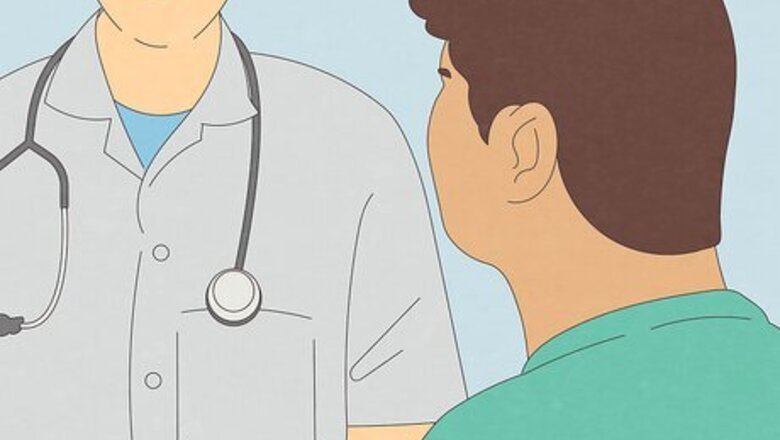
views
X
Trustworthy Source
MedlinePlus
Collection of medical information sourced from the US National Library of Medicine
Go to source
However, after you've had a heart attack, your heart may not be as efficient at pumping blood throughout the body. If your doctor has given you the go-ahead, you can slowly start to work out again to build up your strength and heart health. Experts note that people involved in an exercise program after a heart attack have better outcomes, fewer re-hospitalizations, and a higher rate of event-free survival in the following year.[2]
X
Trustworthy Source
Journals of the American Heart Association
Open Access, peer-reviewed journals focusing on cardiovascular and cerebrovascular diseases, as well as related scientific research.
Go to source
Preparing to Exercise
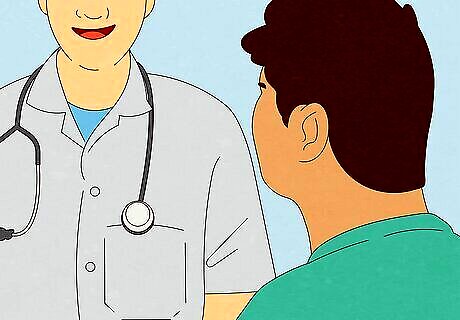
Talk with your doctor. Make sure your doctor has cleared you for exercise before starting an exercise program. When your heart is damaged from lack of oxygen it takes several weeks to heal and return to the best function it can. You may undergo a stress test before leaving the hospital, which can give your doctor a good idea of the level of physical activity you can handle. Generally, there's not a typical amount of time you need to wait before exercising. Your doctor will decide your specific exercise time frame based on your current health, the extent of your heart damage, and your physical condition before the attack. Your physician will recommend that you do not stress the heart muscle with exercise or sex until the muscle has healed.
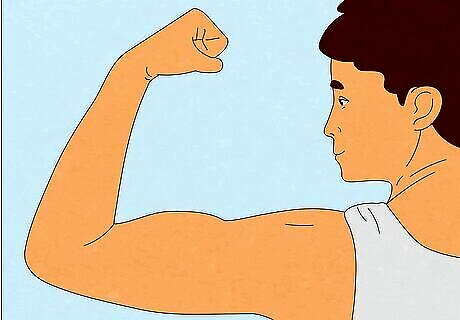
Realize the importance of exercise. Exercise will help strengthen your heart muscle, improve oxygen efficiency, reduce your blood pressure, stabilize your blood sugar, reduce the potential for diabetes, help manage stress and weight and help lower your cholesterol levels. All of these factors will also help to reduce your risk for another heart attack. Start your rehabilitation with aerobic exercise, or cardio. Anaerobic exercise is exercise that is at an intensity high enough to trigger the formation of lactic acid, which can build up in your heart. Anaerobic training is used primarily for non-endurance sports to promote strength, speed, and power. This type of exercise should be avoided after a heart attack. The anaerobic threshold is the point at which you cross from performing aerobically to anaerobically. Endurance athletes train to raise that threshold so they can perform at higher levels of intensity without lactic acid formation.
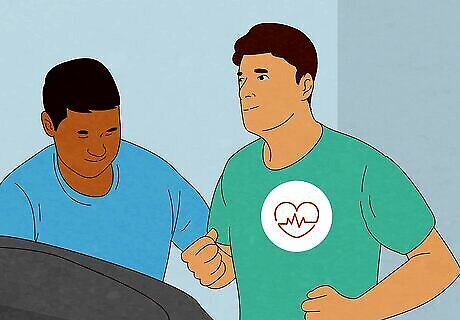
Do a cardiac rehabilitation program if one is available. Everyone recovers from a heart attack at a different rate. The rate of recovery is affected by the amount of heart muscle that was damaged and your physical fitness before the heart attack. During cardiac rehabilitation, your therapists will monitor your exercise program with electrocardiograms and blood pressure to prevent injury. Once you have completed six to 12 weeks of supervised cardiac rehabilitation you can be released to perform your exercise program at home. People who are involved in a cardiac rehabilitation program prescribed by the physician or through a team will have better long-term outcomes and recover faster. Despite this fact, only approximately 20% of qualifying patients are recommended to receive cardiac rehabilitation or a prescribed exercise program after a heart attack. Those numbers are lower for women and older patients.
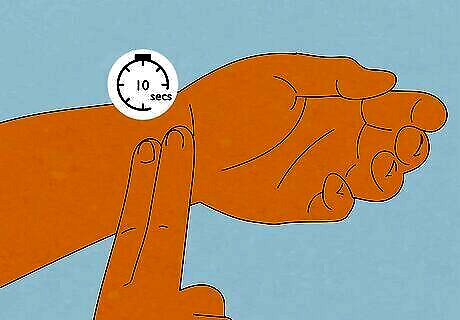
Learn to take your pulse. Take your pulse at your wrists and not your neck (carotid artery). You may inadvertently block the carotid artery while taking your pulse. Place the first two fingers (not your thumb, since it has its own pulse) of one hand on your wrist just below the thumb of the other hand. You should feel your pulse. Count the number of times you feel the pulsation during a 10 second period and then multiply that number by six. You will want to keep track of how fast your heart is pumping so you can keep your heart rate within a range you determine with your medical provider. This range will be different depending upon your age, weight, fitness level and amount of heart damage you suffered.

Talk with your doctor about sex. Sex is a form of exercise. Many times after a heart attack you will be referred to wait two to three weeks before having sex. This time frame depends on the amount of damage to the heart and your stress test results. Your doctor may also determine that you should wait longer than three weeks before having sex.
Starting to Exercise
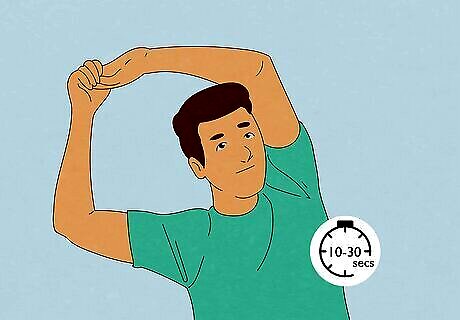
Stretch before exercising. With your doctor's permission, you can often start stretching in the hospital. Try to stretch at least once a day to get your body ready for exercise. Remember to relax and breathe through the stretches. Keep your joints slightly bent and never locked during stretching to prevent injuries. You should also avoid bouncing your muscles. Instead, stretch smoothly and hold the stretch for 10 to 30 seconds. Repeat stretches three to four times. Stretching does not improve muscle strength or heart efficiency, but it does improve your flexibility, allow you to do different types of exercises more easily, improve your balance and will relieve muscle tension.
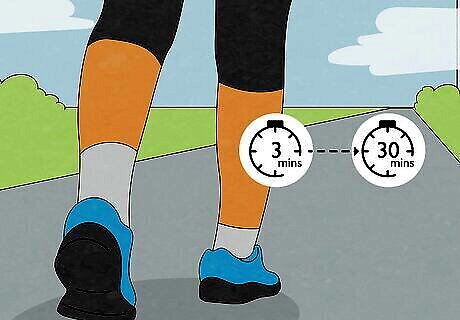
Start your exercise program with walking. Whether you were a marathon runner before the heart attack or a couch potato, your exercise program after a heart attack starts with a walking program. Do a walking warm up for three minutes. Then work up to a pace at which you are breathing heavier than when you’re sitting, but you can still talk and carry on a conversation. Walk for approximately 5 minutes at this pace. Add about one or two minutes to your daily walk each day until you are walking 30 minutes every day. Walk with a partner for the first several weeks and stay close to home in case you become uncomfortable or very out of breath. Carry a cell phone with you in case you need help from home or to call 911 in case of an emergency. Remember to cool down after your workout.
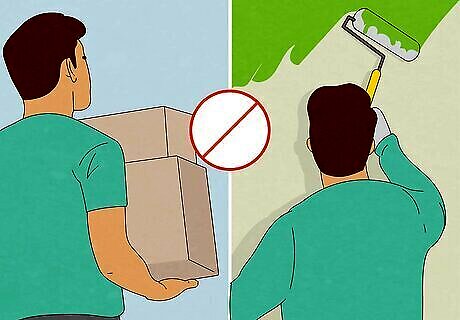
Use caution when adding activities. Avoid strenuous activity during the four to six weeks after your heart attack. It takes your heart approximately six weeks to heal enough for moderate to heavy exercise even if you were in fairly good condition before your heart attack. Avoid things like: heavy lifting or pulling, vacuuming, scrubbing, sweeping, painting, running, mowing or sudden bursts of movement. You can start doing things like walking on a flat surface for a few minutes at a time, cooking, washing dishes, shopping, light gardening and light housework. Increase your exercise time and intensity gradually without ever crossing over into anaerobic exercise. Expect that your leg and arm muscles may be sore in the hours and days following the start of a program. They shouldn't be sore or feel painful during the exercise.

Increase your exercise gradually. Just as if you were starting an exercise program before a heart attack, you’ll want to increase your time and intensity gradually. This will reduce your potential for injury and keep you motivated. Don’t start increasing the time or intensity until your physician has cleared you to do more than walking for 30 minutes. It can take up to 12 weeks to be comfortable walking 30 minutes briskly depending upon the amount of heart damage and your previous fitness level. Once you are comfortable walking briskly for 30 minutes once a day you can begin to incorporate other types of exercise such as biking, hiking, rowing, jogging or tennis.
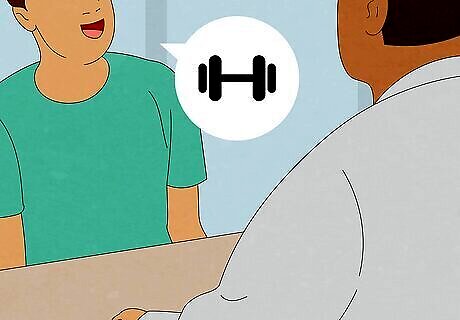
Check in with your doctor before adding strength training. It's unlikely that your physician would recommend you start a strength training program directly out of the hospital. Instead, you should ask your physician about starting a strength training program. You can use hand weights at home or a set of resistance bands that you stand on or anchor in a doorway. Resistance bands can be used for both arms and legs and will let you gradually increase the amount of resistance and energy you expend. Give your muscles time to recover in between sessions, so don't strength train more than three times a week and wait at least 48 hours in between each session. Strength training will also increase the likelihood you’ll be able to return to your previous level of activities, such as mowing the lawn, playing with the grandchildren and bringing in the groceries. Strength training will reduce the potential that you’ll suffer from more inactivity and muscle wasting. Do not hold your breath while you are lifting weights or moving against the resistance bands. This increases the pressure in your chest and places a greater workload on your heart.
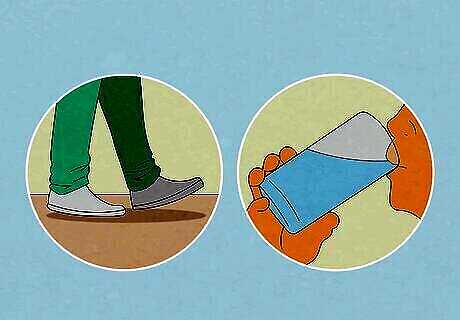
Stay active throughout the day. Once you've exercised, don't stay in a chair the rest of the day. Research has determined that although you may exercise for up to one hour a day, if you remain in your chair for the next eight hours working or watching television you will lose all the benefits of exercise. Instead, try breaking up your day by getting up and stretching or moving about every 30 minutes. Get up to drink a glass of water, use the bathroom, stretch, or walk around for five minutes. To encourage movement, you can also: Walk around when you are on the phone talking, or at least stand instead of sitting. Put your glass of water across the room so you must get up every 30 minutes to drink. Organize your space so that it encourages you to get up and down during the day.
Watching For Warning Signs

Look for signs that your heart is working too hard. If you notice chest pains, nausea, dizziness, irregular heartbeat, or shortness of breath while exercising, stop immediately. The exercise may be straining your heart. Call your doctor or 911 if the symptoms do not disappear quickly. If you have a prescription for nitroglycerin, then carry it with you during exercise. You should also write down the symptoms you experienced, the time of day, when you last ate, how long they lasted, and how often these symptoms appear. Speak with your doctor about any other symptoms before continuing an exercise program. The doctor may want to perform another stress test before you resume exercising.
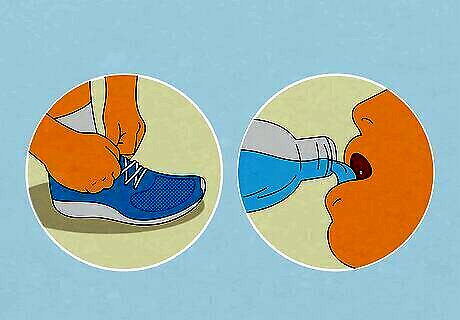
Prevent injuries and accidents. Wear the correct clothing and shoes for the type of exercise you are doing. Stay hydrated during exercise and be sure that someone knows where you are going when you leave to workout outside. Always use good judgement and stay within your limits. It is much better to continue to work out each day at an intensity you feel is lighter than you can manage, rather than to be sidelined for weeks with an injury or be re-hospitalized with another cardiac event.
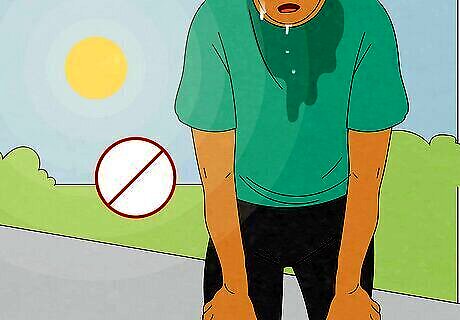
Avoid exercising outdoors when temperatures are high or low. In very cold or hot weather your body has to work harder to provide oxygen to your cells, including your heart. Do not exercise outdoors if the weather is colder than 35°F (1.7°C) or hotter than 85°F (29.4°C) with humidity greater than 80%.


















Comments
0 comment